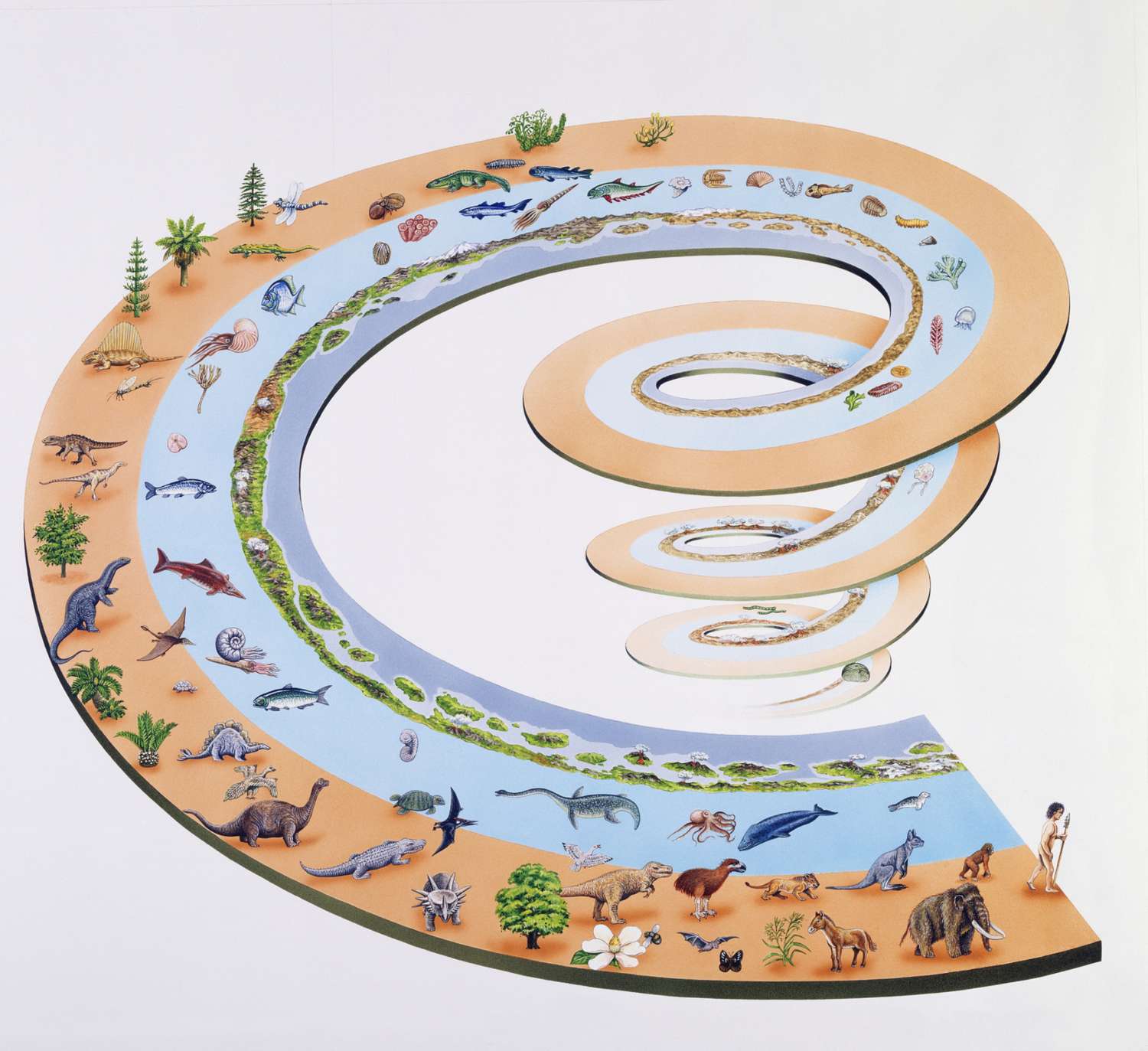
Macroevolution, a fascinating aspect of biology, delves into the grand scale of evolution. It encompasses the study of significant changes in species and the formation of new branches on the tree of life. The concept of macroevolution explores the transformation of organisms over vast periods, leading to the diverse array of life we see today.
In this article, we will dive into nine enigmatic facts about macroevolution. From dramatic evolutionary events to astonishing adaptations, these facts shed light on the awe-inspiring processes that have shaped life on Earth. So, fasten your seatbelts as we embark on a journey through the intricate and captivating world of macroevolution.
Key Takeaways:
- Genetic mutations, environmental changes, and natural selection drive the fascinating process of macroevolution, leading to the emergence of new species and the diversity of life on Earth.
- The Cambrian Explosion, mass extinctions, and convergent evolution are key events in macroevolution, shaping the tree of life and showcasing the remarkable ability of organisms to adapt and thrive.
The Complexity of Macroevolution
Macroevolution is a fascinating concept that explores the evolution of species over longer periods of time. It is the process by which new species arise through the transformation and divergence of existing species.
The Role of Genetic Mutations in Macroevolution
Genetic mutations play a crucial role in driving macroevolutionary processes. These mutations introduce genetic variations that can lead to new traits and adaptations, ultimately contributing to the diversity of life on Earth.
The Impact of Environmental Changes on Macroevolution
Environmental changes have been a driving force behind macroevolutionary events. Shifts in climate, geology, and ecological niches have influenced the emergence of new species and the extinction of others.
The Role of Natural Selection in Macroevolution
Natural selection acts as a filter in the process of macroevolution, favoring traits that enhance an organism’s survival and reproductive success. Over time, these favorable traits become more prevalent in a population.
The Mechanisms of Speciation
Speciation, the formation of new species, is a critical aspect of macroevolution. This can occur through various mechanisms such as allopatric speciation (geographical separation), sympatric speciation (within the same geographic area), or hybridization.
The Cambrian Explosion and the Burst of Biodiversity
The Cambrian Explosion, which occurred approximately 540 million years ago, marked a rapid diversification of life forms. This event led to the emergence of complex organisms with diverse body plans, fundamentally shaping the course of macroevolution.
The Patterns of Extinction and Evolutionary Radiations
Mass extinctions, such as the one that wiped out the dinosaurs, have reset the stage for new evolutionary radiations. These events have sparked the emergence of new lineages and the filling of ecological niches previously occupied by extinct organisms.
Convergent Evolution and the Independent Evolution of Similar Traits
Convergent evolution is a phenomenon in macroevolution where different species independently evolve similar traits or adaptations in response to similar selective pressures. This reveals the remarkable ability of organisms to find similar solutions to survival challenges.
Macroevolutionary Patterns and the Tree of Life
Macroevolutionary patterns provide insights into the branching patterns and relationships among different species. By analyzing genetic and morphological data, scientists construct the Tree of Life, illustrating the evolutionary history of all living organisms.
Conclusion
Macroevolution is a fascinating field of study that provides us with deeper insights into the diversity of life on Earth. By examining the large-scale patterns and processes of evolution, scientists have been able to uncover numerous enigmatic facts that continue to spark curiosity and expand our understanding of the natural world.
From the incredible transformations observed in the fossil record to the fascinating mechanisms of speciation and the role of environmental changes in driving evolutionary patterns, macroevolution presents a captivating landscape of scientific exploration. By delving into the intricate genetic and ecological interactions that shape the evolution of species over millions of years, we gain valuable knowledge about the origins and development of life as we know it.
These nine enigmatic facts about macroevolution barely scratch the surface of the vast body of knowledge within this field. As scientists continue to uncover new evidence and refine their theories, our knowledge of macroevolution will undoubtedly expand, opening the door to even more intriguing discoveries in the future.
FAQs
Q: What is macroevolution?
A: Macroevolution refers to the large-scale changes that occur in populations over extended periods of time, resulting in the formation of new species and the diversification of life forms.
Q: How is macroevolution different from microevolution?
A: While microevolution focuses on the changes that occur within a population, such as variations in gene frequencies, macroevolution examines the broader patterns and processes that shape the evolution of entire groups of organisms.
Q: Can macroevolution be observed?
A: Macroevolutionary processes occur over vast timescales, making direct observation challenging. However, we can infer macroevolutionary patterns through the examination of fossil records, genetic analysis, and the study of comparative anatomy and embryology.
Q: What role does natural selection play in macroevolution?
A: Natural selection, along with other mechanisms such as genetic drift and mutation, is a key driving force behind macroevolution. It leads to the preservation or elimination of traits that contribute to the survival and reproductive success of organisms in their environments.
Q: How does speciation occur in macroevolution?
A: Speciation, the process of forming new species, can occur through various mechanisms including geographic isolation, reproductive barriers, and adaptive radiation. These processes allow populations to diverge genetically and eventually become reproductively isolated from each other.
Q: Are humans a product of macroevolution?
A: Yes, humans are the result of macroevolutionary processes. Over millions of years, our ancestors underwent genetic and environmental changes that led to the emergence of the modern human species.
Q: Does macroevolution contradict religious beliefs?
A: The acceptance of macroevolution varies among religious beliefs. While some religious traditions view evolution as compatible with their teachings, others may hold different perspectives. Ultimately, the relationship between science and religious beliefs is a complex and subjective matter.
Q: Can macroevolution predict future evolutionary trends?
A: While we can make predictions based on current understanding, the complexity of biological systems and the influence of environmental factors make it difficult to accurately predict specific future evolutionary trends. Ongoing research and scientific advancements continually enhance our ability to make informed predictions.
Q: How does macroevolution contribute to our understanding of biodiversity?
A: By investigating the processes and patterns of macroevolution, scientists gain valuable insights into the origin and diversification of species. This knowledge helps us understand the factors that shape and maintain biodiversity, which is crucial for conservation efforts and the preservation of ecosystems.
Macroevolution's enigmatic facts merely scratch the surface of evolutionary mysteries. Unravel unbelievable facts about phylogenetics to grasp life's interconnectedness. Journey through Earth's history with fascinating facts about the fossil record. Explore evolution's unpredictable side by discovering mind-blowing facts about genetic drift. Embark on an evolutionary odyssey that will forever change your perspective on life's diversity and complexity.
Was this page helpful?
Our commitment to delivering trustworthy and engaging content is at the heart of what we do. Each fact on our site is contributed by real users like you, bringing a wealth of diverse insights and information. To ensure the highest standards of accuracy and reliability, our dedicated editors meticulously review each submission. This process guarantees that the facts we share are not only fascinating but also credible. Trust in our commitment to quality and authenticity as you explore and learn with us.


